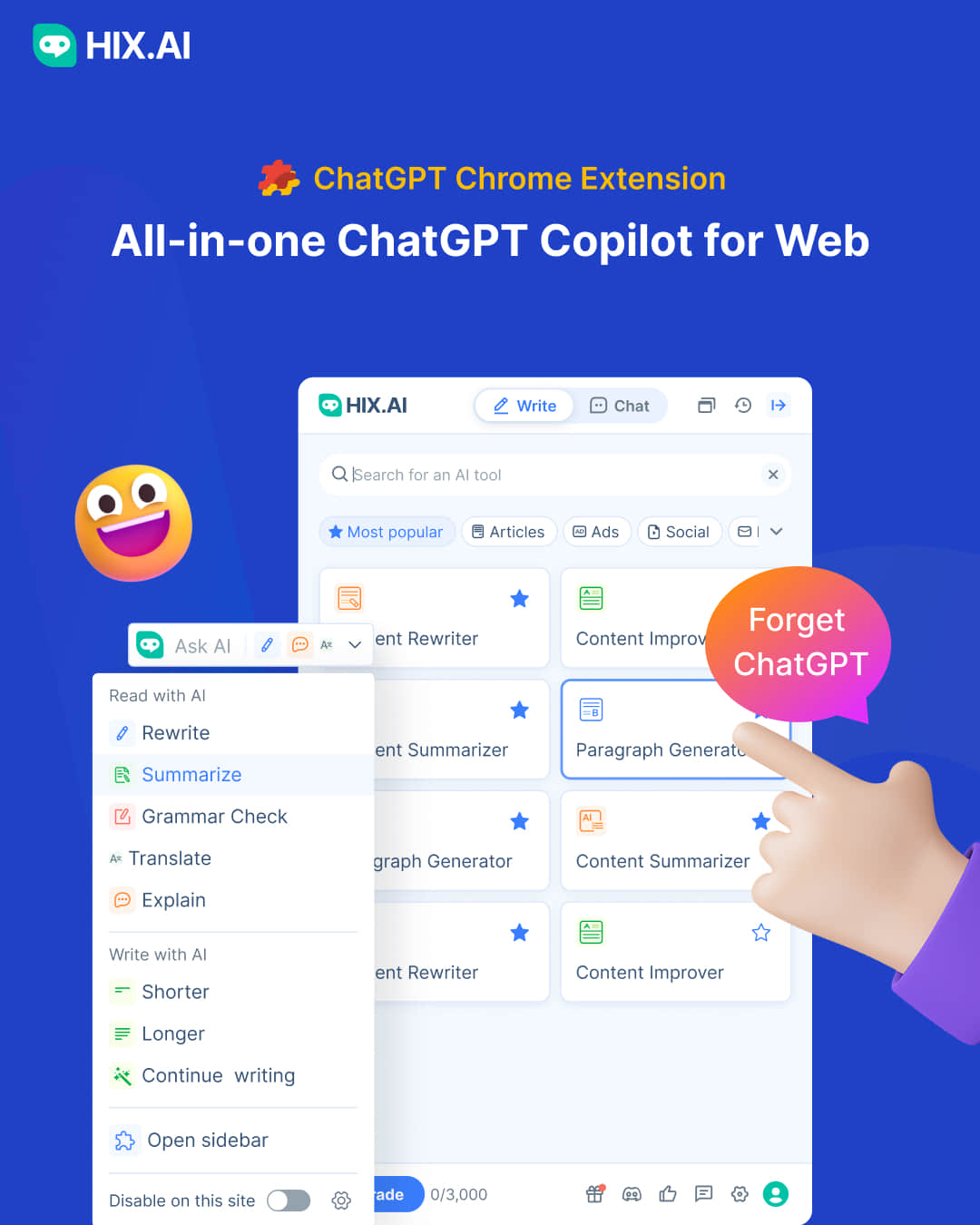Have you ever asked an AI to write something for you and gotten back a block of text that just feels… off? The words are all correct, the grammar is perfect, but it sounds like a boring robot from an old sci-fi movie. It’s what we call the “Uncanny Valley” of writing—it’s almost human, but the missing warmth and personality make it kinda creepy.
You’re not alone. This is the biggest problem with AI writing tools today. They’re super smart, but they lack the human spark—the jokes, the stories, the little imperfections that make writing feel real. The good news? You can easily fix it.
In this guide, we’re going to explore why AI writing sounds so robotic and, more importantly, show you how to make AI writing sound less robotic with some simple tricks and an awesome tool that does the heavy lifting for you. Let’s turn that boring bot-text into something people actually want to read!

Why Does AI Writing Sound Like a Robot? (The Root Causes)
To fix the problem, we first need to understand it. AI is trained on a huge amount of internet data, so it learns to be formal and “correct.” Here’s what that looks like:
- Overly Formal Tone & Jargon: AI loves big, fancy words. It will say “utilize” instead of “use” and “facilitate” instead of “help.” It sounds like it’s writing a school report, not having a chat with a friend.
- Predictable Sentence Structure: Read an AI paragraph aloud. You’ll often hear a dull, repetitive rhythm: “The dog ran. The cat slept. The bird flew.” It’s all subject-verb-object, on and on. Real human writing mixes it up!
- Lack of Contractions and Idioms: An AI will almost always write “I am” and “you are” instead of “I’m” and “you’re.” It also rarely uses fun phrases like “it’s a piece of cake” because it takes those words literally.
- Repetitive Word Choice: If the AI finds a “perfect” word, it will use it over and over. Humans use synonyms and different expressions to keep things interesting.
- Zero Anecdotes or Personal Insight: This is the biggest one. AI has never stayed up late finishing a project, felt nervous about a test, or had a funny thing happen at the store. It can’t share a personal story because it doesn’t have a life! This lack of a “story” makes its writing feel hollow.
Your Editing Toolkit: 5 Easy Ways to Sound More Human
Before we bring in the robots to fight the robots, you can do a lot yourself. Think of yourself as a text doctor, here to give your AI draft a check-up.
- Inject a Conversational Tone. This is the easiest fix. Read your text aloud. Does it sound like something you would actually say to a friend? If you stumble over words or it sounds weird, rewrite those awkward phrases. Change “One must consider the various options” to “You should think about your options.”
- Vary Your Sentence Length. Monotony is boring! Look at your paragraphs. Are all the sentences the same length? Break up long sentences. Add a short, punchy one for impact. See? It keeps your reader engaged and makes your writing flow better, just like a human’s would.
- Swap Verbs for Power Words. Hunt down those boring, formal verbs and replace them with simple, powerful ones. Instead of “The program will facilitate learning,” try “This program helps you learn.” Instead of “We will utilize the tool,” say “We will use the tool.” It’s a small change with a huge effect.
- Add Personality with Rhetorical Questions. Want to connect with your reader directly? Ask them a question! Sprinkle in questions like, “Pretty cool, right?” or “Have you ever felt that way?” This tricks the brain into feeling like it’s part of a conversation, not just reading a textbook.
- Include Minor Imperfections. Humans aren’t perfect, and our writing shouldn’t always be either. It’s okay to start a sentence with “Well,…” or “Look,…” or even use an occasional “um” or “ah” in very informal writing. This is a secret weapon for adding a natural human tone to AI content and making it feel genuine.

The Superpower Solution: Let an AI Humanizer Do the Work
What if you don’t have time for all that editing? What if you have a huge essay or blog post to fix? Doing it all by hand can take forever. This is where the magic happens.
Imagine a tool whose only job is to make AI generated text undetectable by making it sound human. This is called an AI Humanizer, and it’s different from a simple paraphrasing tool.
But Hix.ai is more than just a humanizer. Think of it as your all-in-one AI writing assistant. While its Humanizer tool is a superstar at fixing robotic text, the full Hix.ai platform can also help you generate that first draft. It has over 120 different writing tools—like an AI essay writer, a paraphrasing tool, a grammar checker, and even an AI detector to check your work. So, you can go from a blank page to a polished, human-sounding piece of content all in one place, making it a powerful tool for bypassing AI content detection from start to finish.
Stop worrying about robotic writing and start creating content that truly connects. Experience the difference for yourself with Hix.ai.
A tool like Hix.ai’s Humanizer is designed with one goal: to rewrite your text so it mirrors how a person would write it. It doesn’t just swap words; it alters the whole rhythm of the sentences, adds casual phrases (like “kind of” or “a bit”), and uses something called “colloquialisms” (everyday slang). The ultimate test? It can bypass AI content detection software because it successfully mimics a human writing pattern.
Let’s see it in action!
Robotic AI Input:
“The utilization of artificial intelligence for content creation facilitates efficiency. However, the output frequently lacks the nuanced elements of human expression, which is a significant drawback. Consequently, the content may fail to engage readers on an emotional level.”
Humanized Output (like from Hix.ai):
“Using AI to create content is a real time-saver, but there’s a catch. The writing often misses the mark on the little things that make it feel human. Because of this, readers might not really connect with it emotionally.”
See the difference? The second version is clearer, more direct, and feels like something a real person would say. It’s the perfect way to transform robotic AI text into engaging content without spending hours editing.

Conclusion: Teamwork Makes the Dream Work
So, what’s the best way to create amazing content? It’s not human vs. AI. It’s human and AI working together as a team.
The future of writing is a powerful partnership. Use AI for what it’s great at: generating ideas, researching facts, and creating a solid first draft super fast. Then, step in with your human superpowers—or a tool like Hix.ai’s Humanizer—to add the soul.
Your new workflow should look like this:
- Draft: Let the AI generate the raw material.
- Polish: Run it through a humanizer to fix the robotic tone.
- Perfect: Do a final, quick read-through to add any personal stories or specific details.
By humanizing your AI writing, you build trust with your readers, make your content more fun to read, and ultimately, get better results—whether you’re writing a school essay, a blog post, or a story.
Ready to stop publishing robot-speak? Try the Hix.ai platform today and see how easy it is to create and polish authentic, engaging writing that sounds like you!
Stop worrying about robotic writing and start creating content that truly connects. Experience the difference for yourself with Hix.ai.

Related Post:
